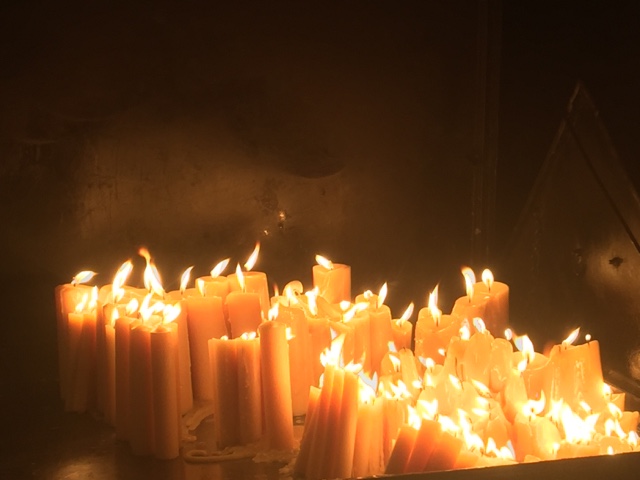Late 1930s 20,000 Jews in Zagreb. Fascists took power October 1941, demolition (1941-2 ) of big synagogue that had survived the earthquake of 1880. Jews were deported to the concentration camps. Leonardo Rigičik friend of minister and leader of Zagreb state was told about forthcoming demolition and warned the Jews caring for the shule. They saved the Torah, some columns and a wash basin.
After 1948 survivors went to Israel; others intermarried. Today there are 400 Jews in Zagreb. 80% greater if you count the intermarried ones. In 2005 the Jewish community split over politics and orthodoxy divisions. No synagogue but a community building with school, library, offices, etc. Another building called Beit Israel with praying area, library, museum and restaurant.
Plans to rebuild synagogue got posponed first by communism, then in 1980s post communism, homeland war prevented it.
Factions are still arguing about the rebuilding.
Cemetery Mirorgoj, mixed religion cemetery unique.
10am opening, Museum of Arts and Crafts near the theatre has a Judaica section.
Capital Hill, Kaptol Hill, centre of Catholic Church since 11th century.
Austrian baroque style on churches.
Cardinal Stepinac opposed the Nazis and saved Jews during the Holocaust.
"Despite initially welcoming the Independent State of Croatia, Stepinac subsequently condemned the Nazi-aligned state's atrocities against Jews and Serbs.[5] He objected to the persecution of Jews and Nazi laws, helped Jews and others to escape and criticized Ustaše atrocities in front of Zagreb Cathedral in 1943.[6][7][8]
(Wikipedia.org Aloysius Stepinac)
Farm produce markets, fresh food, Ibarnica (fish) arts and crafts, flowers.
Friends meet in bars, not in their small homes. They close at midnight, are atmospheric often have live music. There is a 2klm stretch of bars.
Memorial candles at the Stone Gate shrine.
Gallery window near St. Mark's Church
The president of Croatia is a woman, the first woman president in all the Balkan countries but the president is not powerful. The Prime Minister has the power as in most European countries.
Sculptures decorating the current folk festival.
This museum has paraphernalia and personal stories of broken relationships. Does this expiate the pain? Maybe.
" The Museum of Broken Relationships grew from a traveling exhibition revolving around the concept of failed relationships and their ruins. Unlike ‘destructive’ self-help instructions for recovery from failed loves, the Museum offers a chance to overcome an emotional collapse through creation: by contributing to the Museum's collection.
Whatever the motivation for donating personal belongings – be it sheer exhibitionism, therapeutic relief, or simple curiosity – people embraced the idea of exhibiting their love legacy as a sort of a ritual, a solemn ceremony. Our societies oblige us with our marriages, funerals, and even graduation farewells, but deny us any formal recognition of the demise of a relationship, despite its strong emotional effect. In the words of Roland Barthes in A Lover's Discourse: "Every passion, ultimately, has its spectator... (there is) no amorous oblation without a final theater."
Conceptualized in Croatia by Olinka Vištica and Dražen Grubišić, the Museum has since toured internationally, amassing an amazing collection. Although often colored by personal experience, local culture and history, the exhibits presented here form universal patterns offering us to discover them and feel the comfort they can bring. Hopefully they can also inspire our personal search for deeper insights and strengthen our belief in something more meaningful than random suffering."
(www.brokenships.com)
Back down the fernicular to our hotel.
Tonight we have a farewell dinner with our Shalom Balkans tour group. Here is what I wrote as a thank you to Fred:
As I said after the Baltics trip, this trip is perfect. What a balance of city and country, sightseeing and socialising, sleeping and eating, hurrying and pausing, laughing and historicising, sharing and privately collecting memories.






















No comments:
Post a Comment